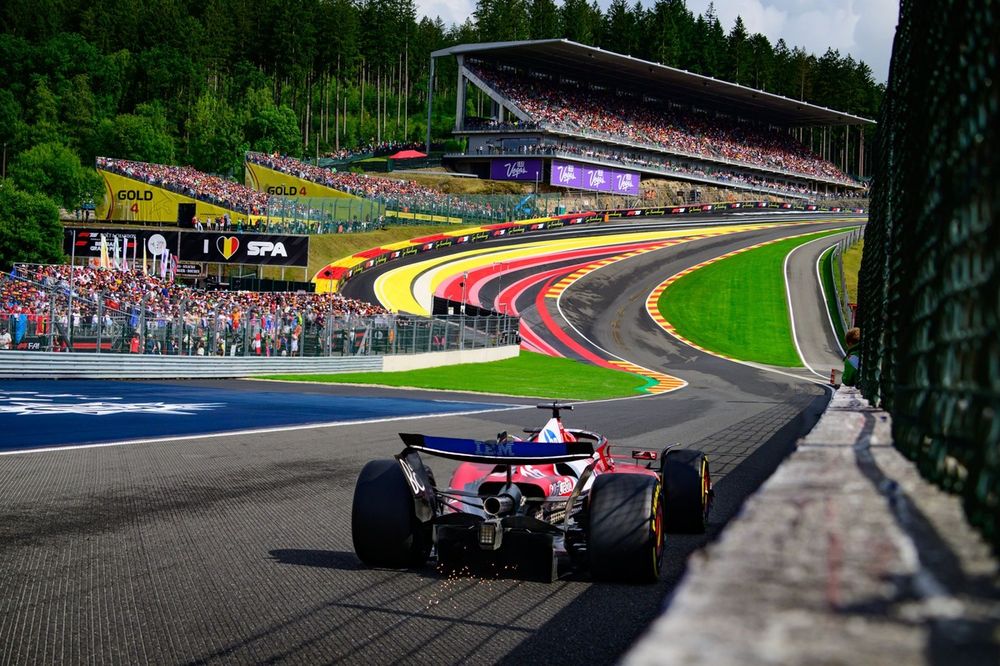
FIA Grade 1 Circuits: The Essentials for Hosting F1 Races
Formula 1's global calendar, spanning 24 tracks across 21 countries, isn't just about exciting venues. Every circuit must meet the FIA's stringent Grade 1 classification to host a Grand Prix, a top-tier standard ensuring safety and suitability for F1's high-performance machines.
Why it matters:
F1's rigorous Grade 1 circuit requirements are paramount for driver safety and maintaining the spectacle of Grand Prix racing. These regulations cover everything from track dimensions and pitlane design to essential medical facilities and runoff areas, ensuring that only the most prepared venues can host the pinnacle of motorsport. This classification is vital for both established circuits and new additions to the F1 calendar.
The Details:
- Length and Width: A Grade 1 circuit must be between 3.5km and 7km long, with no straight exceeding 2km (Baku is a rare exception at 2.2km). The track width must be at least 12m, though temporary street circuits like Monaco (averaging 10m) receive special dispensation. These dimensions are critical for safe overtaking and managing F1 car speeds.
- Start-Line Configuration: The starting grid must be at least 15m wide, with grid spots spaced 8m apart for F1. The start line should ideally be 250m from the first corner, which must have a change of direction of at least 45 degrees and a radius under 300m.
- Pitlane Specifics: The pitlane needs to be at least 12m wide, adjacent to the start-finish straight. Entry and exit points are designed to prevent interference with the racing line, minimizing collision risks.
- Gradient and Banking: The start/finish straight's gradient can't exceed 2%, and banking on track is limited to 5.7 degrees, with specific exceptions like Zandvoort's Turns 3 and 14.
- Safety Barriers and Runoff: Due to F1's high speeds, Grade 1 tracks have specific barrier and runoff requirements that vary by corner. These include combinations of grass, gravel, tarmac escape roads, deceleration beds, and energy-absorbing barriers.
- Medical Facilities: Grade 1 tracks require permanent medical centers with at least two doctors and two surgeons present during race weekends. These facilities must be equipped with ventilators, heart-rate monitors, X-rays, ultrasound, and other critical equipment to treat severe injuries.
- Drainage and Advertising: Tracks must have effective drainage systems (including grooved tarmac and specific slopes) to prevent waterlogging. Advertising boards must be secure and not obstruct visibility, and no advertising is allowed on track surfaces or in runoff areas if it reduces skid resistance.
- Accessibility: While the FIA doesn't mandate specific capacity, public areas must be accessible for fans with disabilities, including designated viewing areas, specialist toilet facilities, reserved parking, and paved pathways.
The Big Picture:
The FIA's multi-tiered grading system ensures that race venues are tailored to the performance levels of the vehicles competing. Grade 1, the pinnacle, caters exclusively to the extreme power-to-weight ratio of F1 cars (less than 1hp/kg). This comprehensive approach, balancing track design, safety infrastructure, and spectator experience, is fundamental to F1's continued growth and appeal, allowing it to expand its calendar while maintaining rigorous standards.
What's next:
As F1 continues to explore new venues and expand its global footprint, adherence to these Grade 1 standards will remain non-negotiable. Circuits on the current 2025 calendar and those aspiring to join it must consistently meet or exceed these demanding requirements, ensuring the sport's integrity and the safety of its participants. The evolution of F1 car technology may also prompt future adjustments to these regulations, reflecting ongoing advancements in motorsport safety.
Original Article :https://www.motorsport.com/f1/news/fia-grade-1-what-it-means-and-why-its-the-min...









